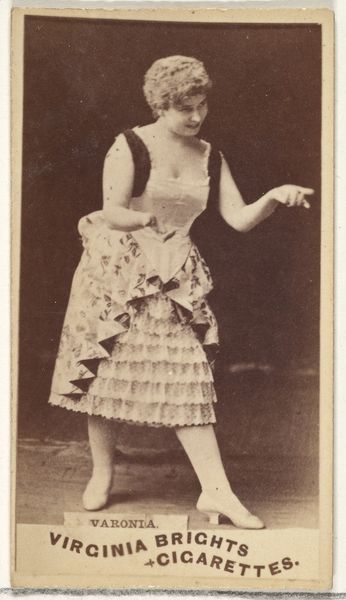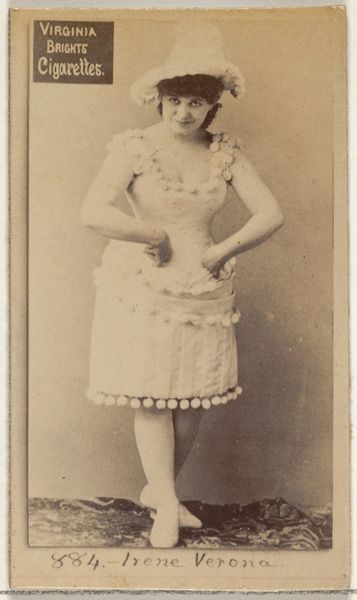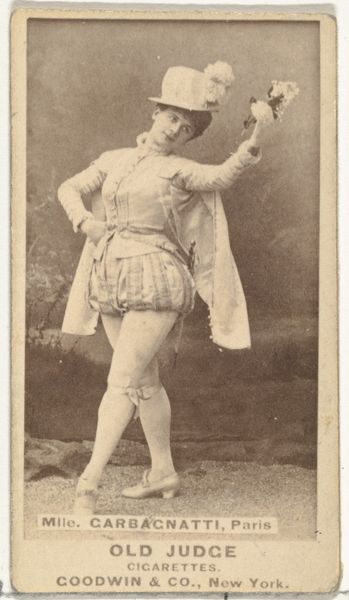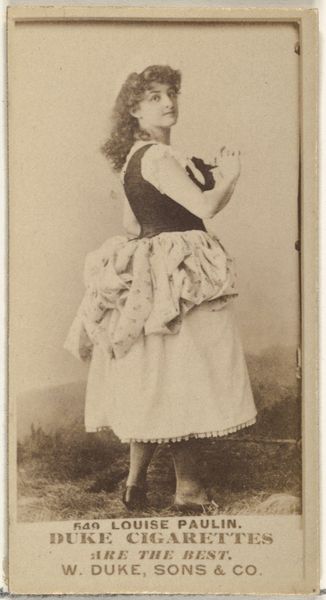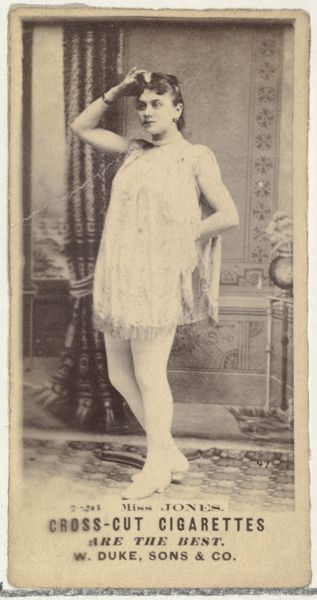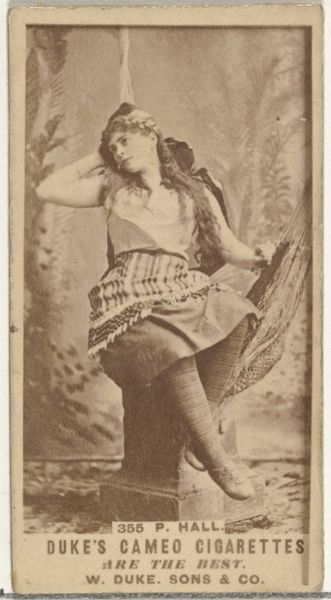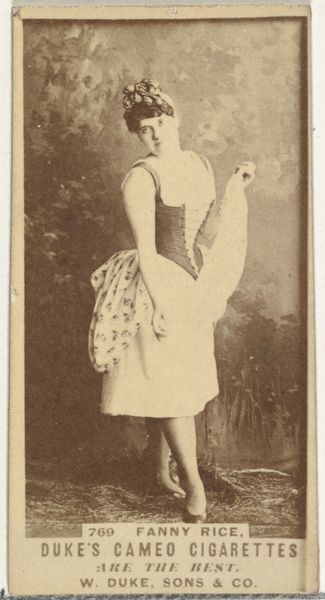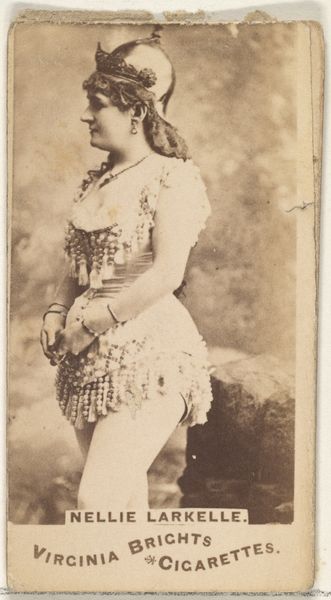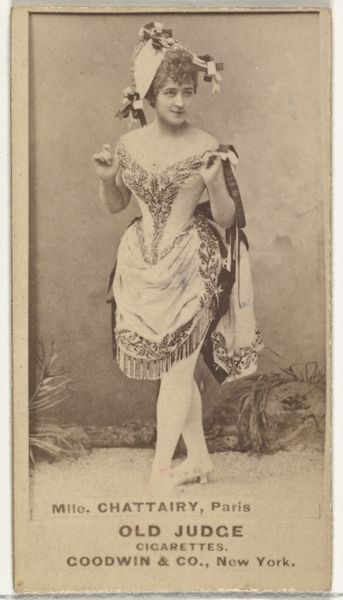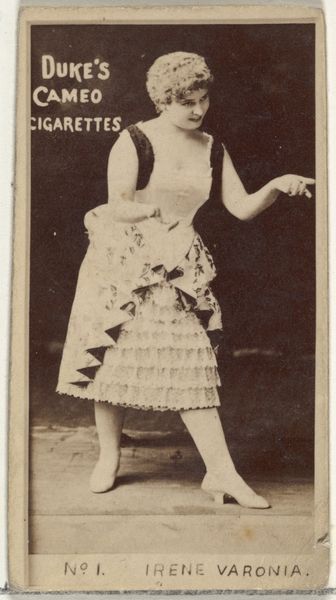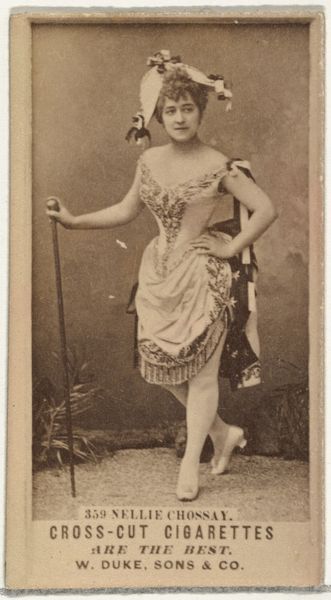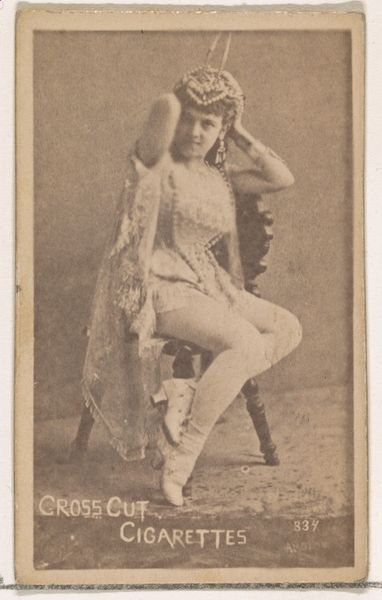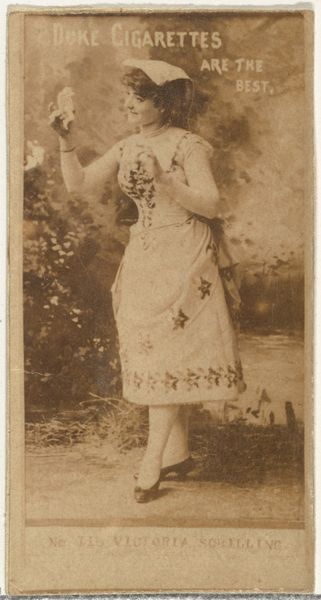
Card Number 344, Blanche, from the Actors and Actresses series (N145-3) issued by Duke Sons & Co. to promote Cross Cut Cigarettes 1880s
0:00
0:00
drawing, print, photography
#
portrait
#
drawing
#
pictorialism
# print
#
photography
#
genre-painting
Dimensions: Sheet: 2 11/16 × 1 3/8 in. (6.8 × 3.5 cm)
Copyright: Public Domain
Editor: This is "Card Number 344, Blanche," from the Actors and Actresses series, dating to the 1880s. It was produced by Duke Sons & Co. as an advertisement for Cross Cut Cigarettes, using photography and printing techniques. What's interesting is that it is considered a drawing but it's a photograph used as a medium. The image of Blanche in her theatrical dress gives me a sense of staged artifice, like we're seeing both celebrity and advertisement all at once. What stands out to you? Curator: What interests me is how this seemingly simple image reveals complex industrial processes and cultural values. We have an actress, photographed, reproduced via printmaking on a card – a commodity intended for mass consumption. The "drawing" tag perhaps speaks to the photographic manipulations that went into producing an idealized image ready for distribution. Think about the labour involved – from cultivating the tobacco, manufacturing the cigarettes, the photographic production, to the distribution networks. Editor: So, you're saying the card is not just an image of Blanche, but a physical manifestation of a larger economic and social system? Curator: Exactly. It's about the industrialization of image-making, the marketing of entertainment, and the construction of celebrity, all packaged within a small, affordable product. What does it mean that “art” like this existed for the masses and not just wealthy patrons? Editor: It challenges the notion of "high art," doesn't it? I guess I had never considered celebrity portraits of actresses as industrial objects. Curator: Precisely. And think about what is considered collectible or “artworthy”. Why are photographs considered in many contexts to be different than "drawings?" It causes us to ask critical questions about production and value, then and now. Editor: That's definitely given me a new perspective. Now I’m thinking about how consumer culture uses these techniques of celebrity endorsements, photography, and printing to push for capitalist gain, but also, who the value goes to—laborers, stockholders, etc.
Comments
No comments
Be the first to comment and join the conversation on the ultimate creative platform.
